April 20-May 5, 2009
Rain! The weather on the coast of Ecuador, like many coastal regions, is determined almost entirely by the oceans. Our Pacific Ocean currents are Humboldt and El Niño. Recent increased activity in the El Niño current, associated with the rainy season (January-April/May), has produced some beautiful rains during the past two weeks. This was after what had been assumed by many to be at that point the end of a lackluster rainy season. The onset rains coincided with large spring tides, influenced by the phase of the moon and the arrival of a groundswell generated by a cyclone in New Zealand a week earlier. The combination of these produced amazing waves and commenced what has now been two weeks (and counting) of frequent precipitation in Bahía. Needless to say, we are very happy as the trees planted this year (and from previous years as well) are improving their odds of survival with each additional rain.
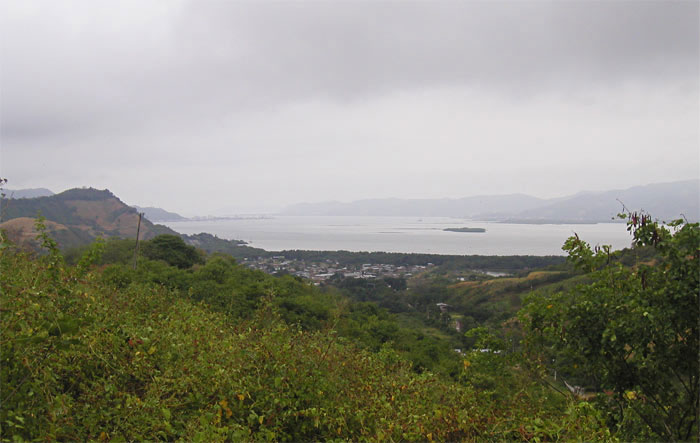


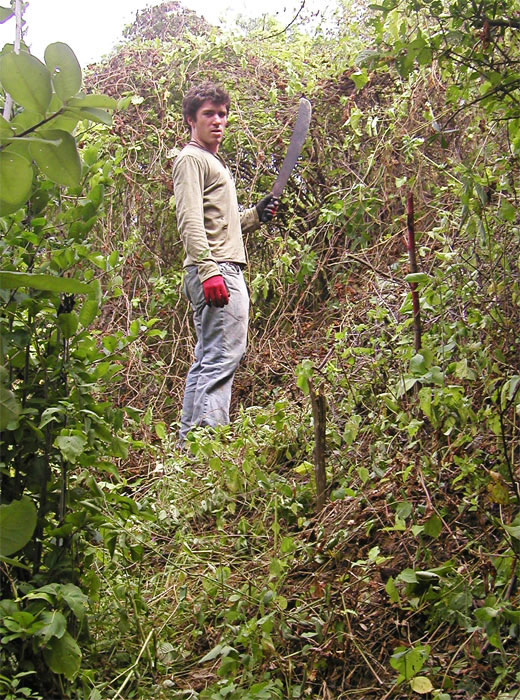
The rains have fallen almost exclusively at night. Days are hot and muggy, amplified by full sun.
This produces the effect of existing in a sauna. I tend to start sweating by about eight in the morning. As a result of the change in weather, we have adjusted the work schedule.
While continuing to tend to seed planting in the greenhouse, we are now revisiting many of the old revegetation sites to clean weeds off of trails and trees, and to inspect the growth progress.
The rains are equally beneficial for the growth of weeds and vines as they are for trees.

Thus far we have cleaned up sites at: El Nuevo Globo (2008), La Universidad Catolica (2008 & 2009), Bosque Encantado (2007 & 2008), and El Toro (2007 & 2008). The results have been encouraging. Although a significant portion of the trees have died ~30% (?), those that have survived appear to be thriving.
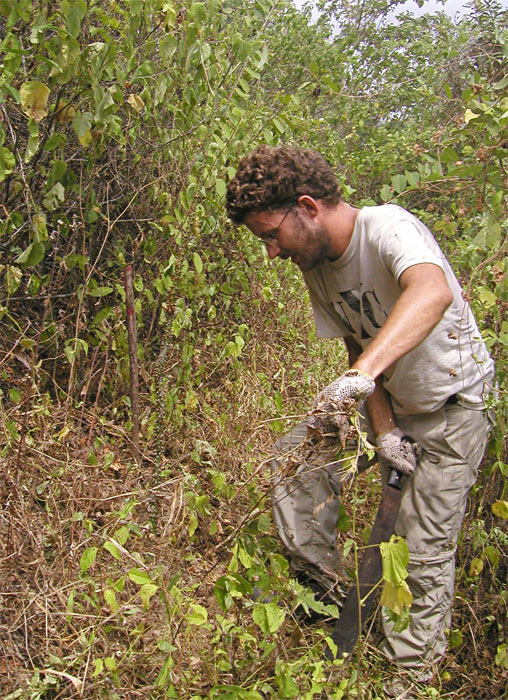
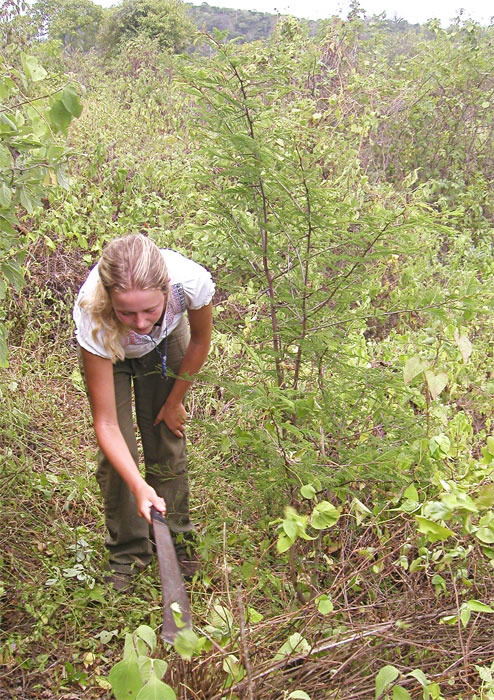
Edwina clears a trail next to a Guarango
The summer rush of volunteers has already started with the arrival of some newcomers. We now have approximately five volunteers in the house.
Photos taken at the 2007 Bosque Encantado site show the volunteers with some of the trees we uncovered from beneath the weeds. Not pictured is Guilhem, from France.
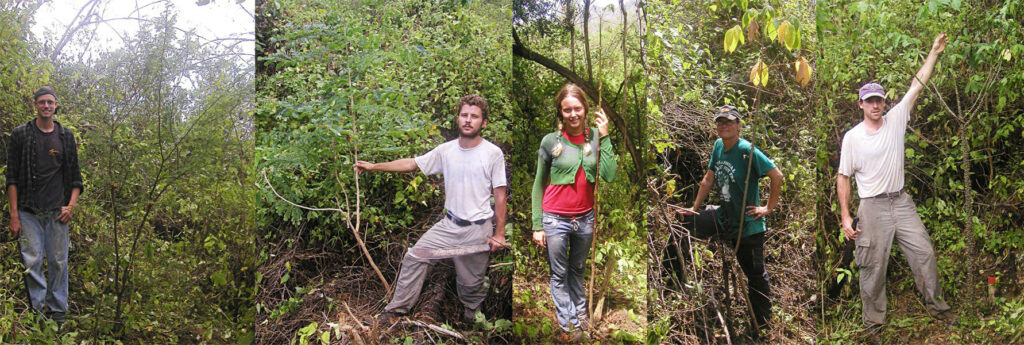
In the greenhouse, seedbeds of Guachepeli, Achiote, Pechiche, Dormilon and Seca are already germinating. The long process of revegetation begins here. Later, these seedlings will be transplanted to three-liter bottles, tended for the duration of the dry season and finally planted at new sites with the rains of the next rainy season.

Edwina spreads Tierramonte mulch on top of a seedbed
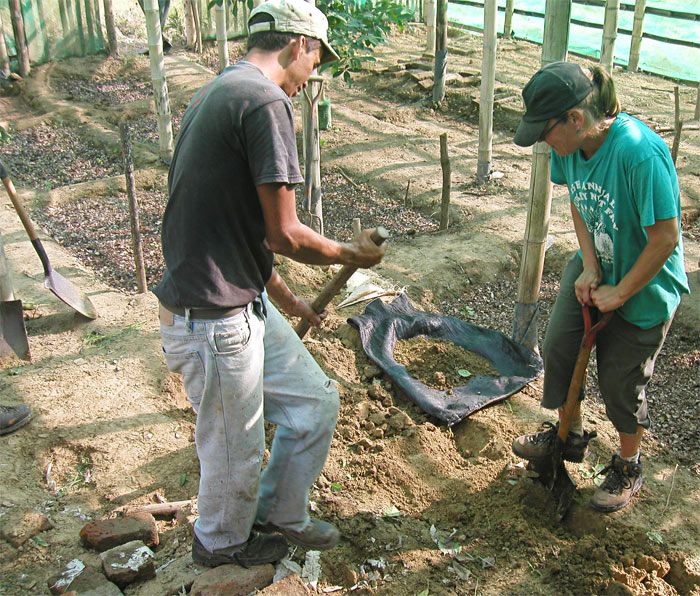
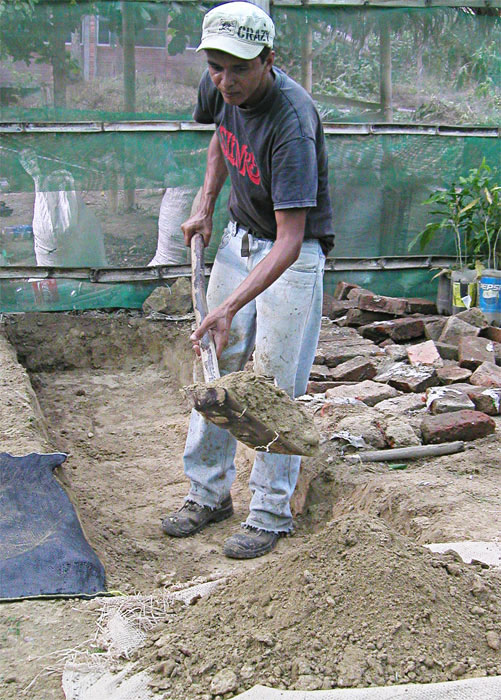
Jaime puts the finishing touches on the hole for the seedbed.
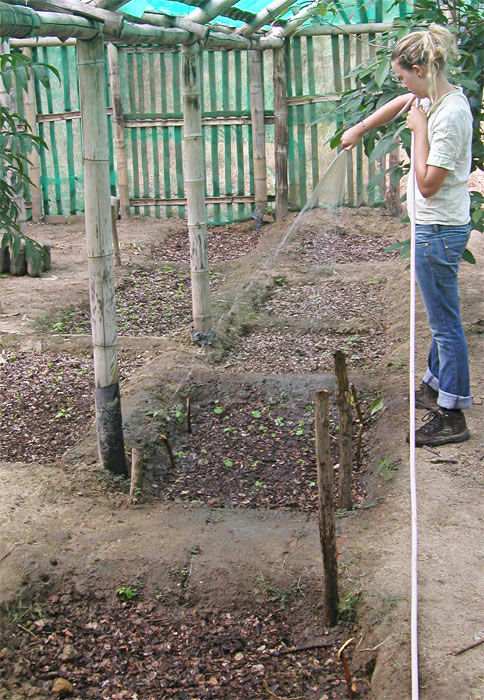
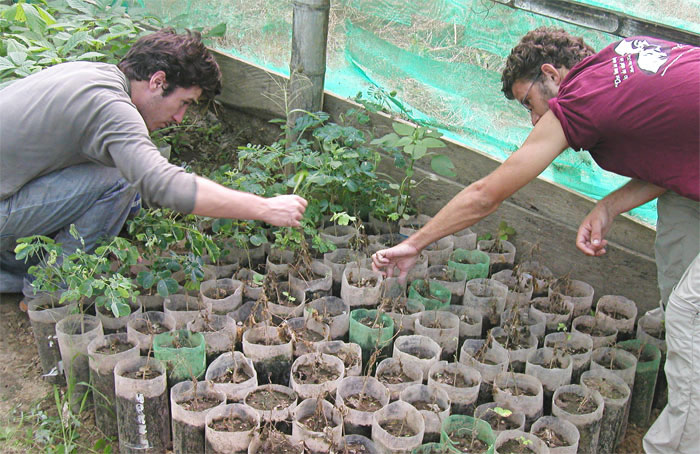

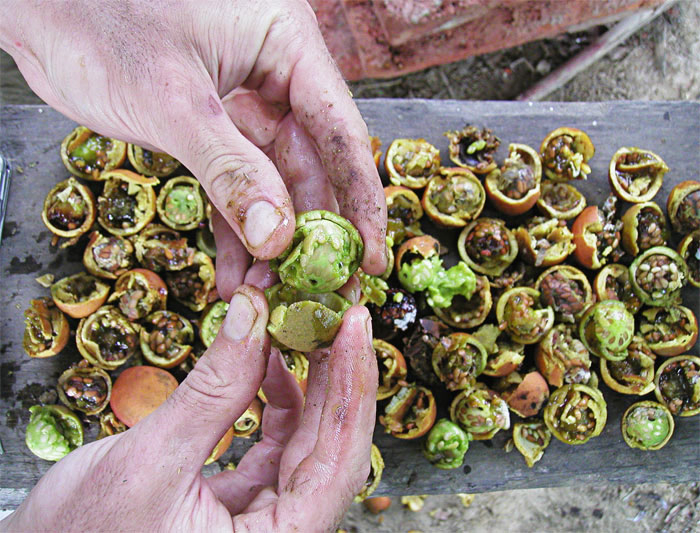
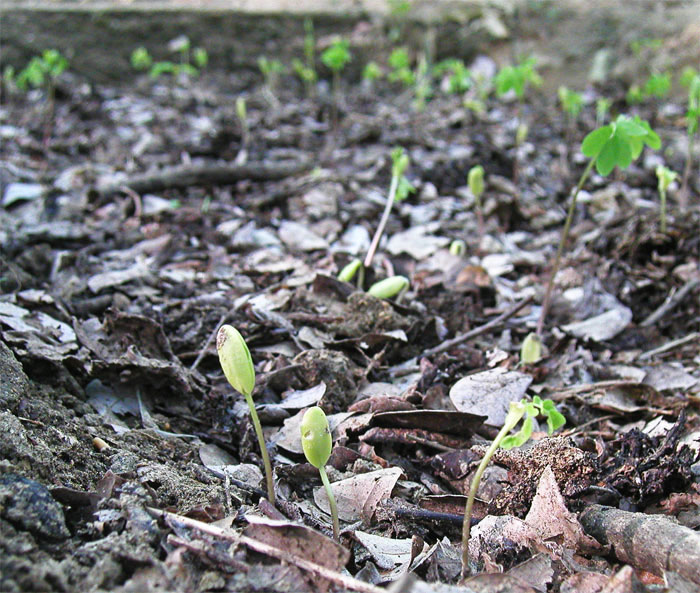
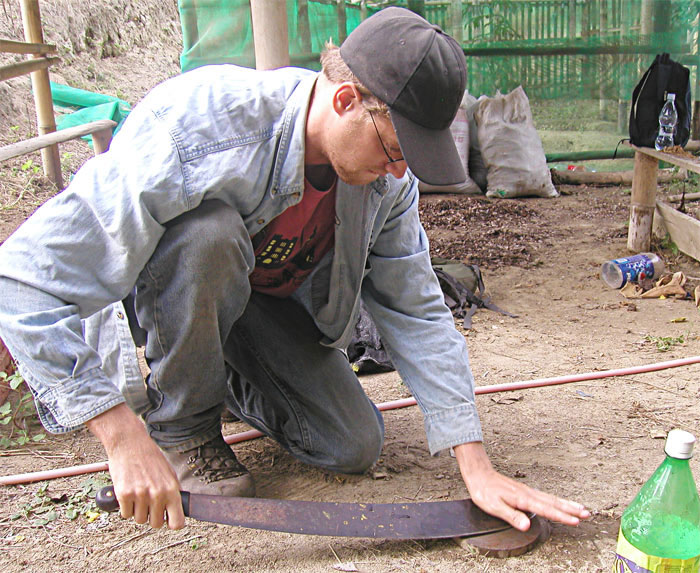

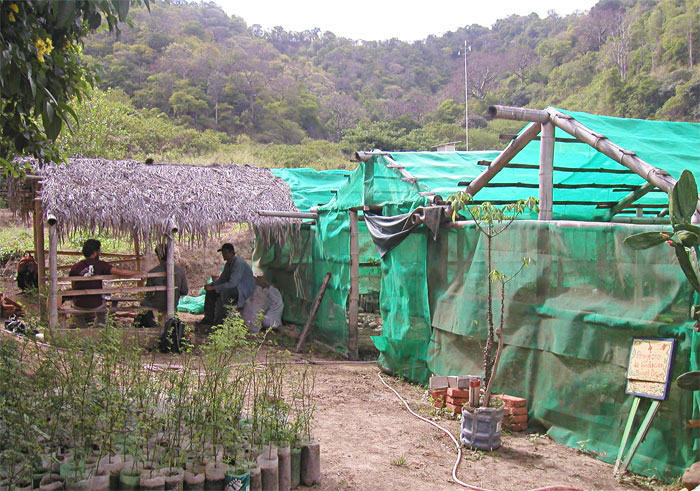

The final point of business is the progress that has been made with the Bioregional Education Program that is beginning this coming week. Two new teachers have been hired and are being trained to expand the program from one class to three. Class assistants (graduates of previous sessions) have been selected to help run the program. Two more schools (Vicente Hurtado and Fanny de Baird in addition to Javier Rodriguez) are on board to provide students to participate. And we’ve revised and printed copies a new version of the Bioregionalismo booklet and sent for tee-shirts to be made.
Pásalo bien,
Clay

Reader Interactions